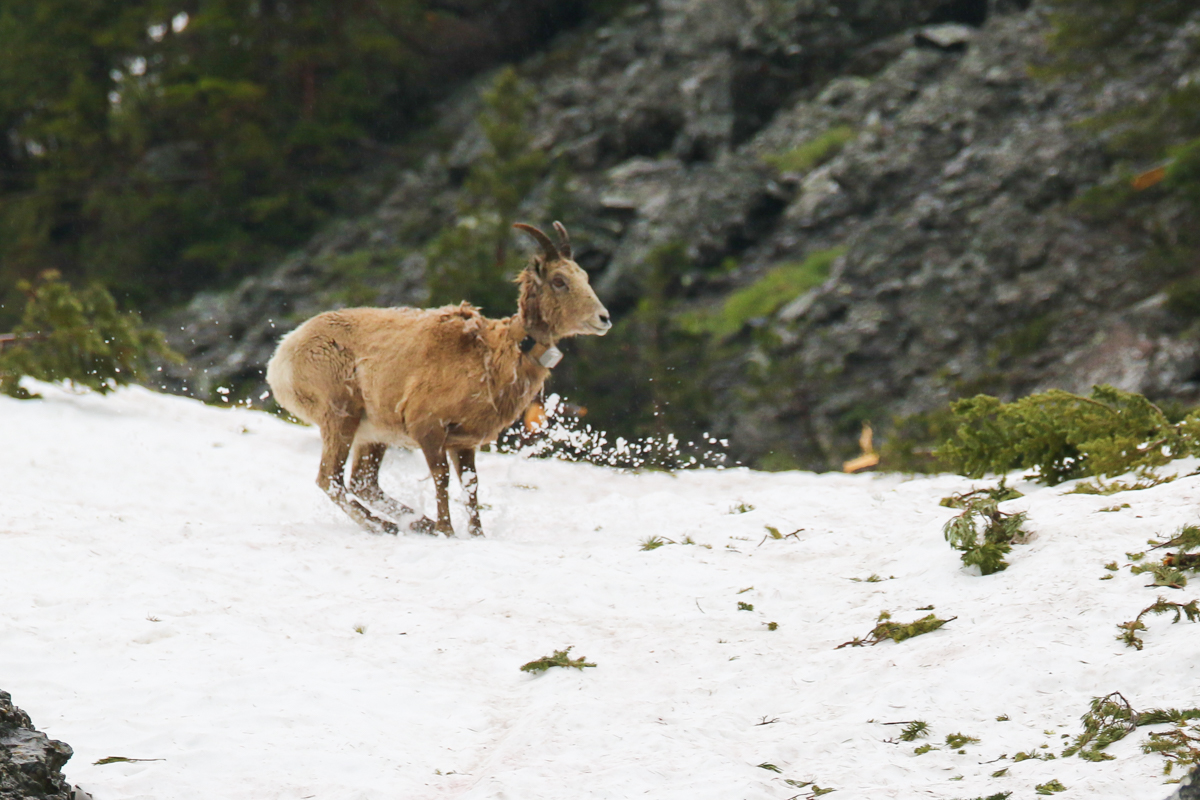A small, dedicated crew departed the lodge at 5:15 a.m. for wildlife viewing and a hike while the folks left behind took advantage of a rare opportunity to get some much-needed extra rest. On the crew’s outing, they hiked to Trout Lake and saw a bald eagle perched on a snag before it took off right over head, a bison carcass, fairy shrimp, and a muskrat. Our trip leaders enjoyed a face plunge into the frigid water before heading back to the lodge where the rain was pouring. With the town’s power out and no sign of the rain letting up, we did what all good teachers do, we pivoted. After all, one of our group goals for the trip is to “go with the flow”.
Heading to Roosevelt Lodge for brunch (that quickly evolved into lunch), we noticed a hoard of spotting scopes on a knob in the Lamar Valley, so we pulled over for a look. Wolves again. Five in total, three grays and two blacks. They were rambling through the valley before bedding down for a mid-morning nap, peacefully surrounded by bison. We resumed our journey toward lunch at Roosevelt Lodge. The lodge was constructed near the site of President Theodore Roosevelt’s camp when he visited the park in the 1800s. The log structure, with its open dining room is the ideal place for some roast beef by a hot fire in the commanding river rock fireplace surrounded by new friends and thoughtful conversation. Next stop: Canyon Village.
On the way over windy, snow-kissed Mount Washburn, we spotted seven bighorn sheep on a steep, rocky slope. Bouncing into the air, twisting and playing, the sheep put on a show for our chilly group. Bonus points for readers: what is a group of sheep called? Taking in the fire-scarred landscape on our way into the canyon, we reflected on how a destructive force like wildfire is a catalyst for new life. In 1988, the park experienced one of its largest recorded fires ever, burning 1.4 million acres in the Greater Yellowstone Ecosystem. These wildfires are important for fire-dependent species, nutrient cycling and wildlife.

As the rain tapered off, we enjoyed some retail therapy and flushing toilets in Canyon Village. Notice: If you have requests for souvenirs, please send them to your trip participant immediately. We enjoyed a hike “right off the road” (we are quickly learning that the participants have different meanings for this phrase than our brave trip leaders) descending into the Grand Canyon of Yellowstone to the top of Lower Falls. We all tested our nerves inching towards the edge for a picture in front of the raging Yellowstone River plunging 309 feet into the canyon below. For a different perspective, we hiked up and out to Lookout Point for a zoomed out view of the falls.

After dinner at the Canyon Village Eatery, we stopped near the rim of the Yellowstone Caldera for a quick lesson on the geology of the park. Yellowstone’s landscape has been shaped by volcanic activity, lake deposits, and glaciers for the past 570 million years and includes three major eruptions. Ash from one of eruption stretched all the way to the Midwest! These eruptions created calderas, or depressions in the Earth’s surface that result from the eruption being so violent that is blows apart the landscape. We had a team meeting at Slough Creek, passed through the Lamar Valley, navigated a bison jam, and returned to our lodge as the sun set on another day of wandering and wondering in Yellowstone.
